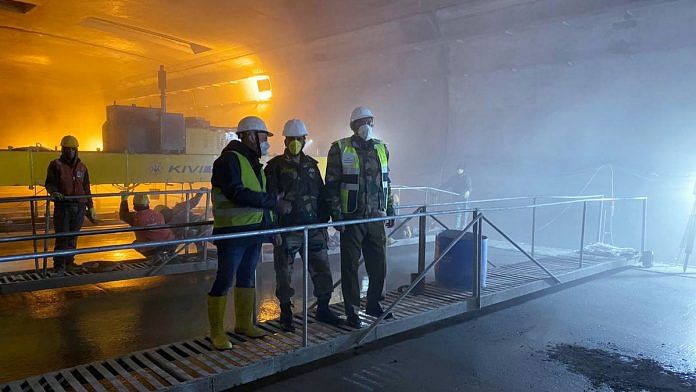New Delhi: Infrastructure was expected to get a massive fillip in Budget 2021, and Finance Minister Nirmala Sitharaman has given it exactly that, announcing a slew of measures, including setting up of a Development Finance Institution (DFI), allowing large-scale asset monetisation, and allocating the highest-ever capital expenditure of Rs 1.08 lakh crore for building highways.
The total allocation for the highways sector is Rs 1.18 lakh crore, up 28 per cent from Rs 91,823 crore in 2020-21.
Road projects in four poll-bound states Assam, Kerala, Tamil Nadu and West Bengal have been allocated Rs 1.93 lakh crore separately under the Bharatmala project.
The infrastructure boost has been fuelled by the growing realisation that India’s post-pandemic economic recovery will be led by spending on this sector.
“This is for the first time that infrastructure has got such primacy in the Budget. It does not only mean fillip for the infra sector but will have a cascading effect in all other sectors including steel and cement,” Union Road Transport Minister Nitin Gadkari told ThePrint.
Experts believe that an infra push now will not only be the right antidote to check the slowdown in the economy, but will also create jobs and boost growth.
The government had already shown signs of such a push, because despite imposing expenditure curbs during the lockdown on most departments, the finance ministry reached out to infrastructure ministries like highways and railways to step up spending.
Also read: No major income tax relief in Budget, new agri cess won’t push up petrol & alcohol prices
Slew of measures
A Bill to set up the DFI — which will be capitalised with Rs 20,000 crore — will be introduced in the ongoing session of Parliament. The DFI will have a lending portfolio of approximately Rs 5 lakh crore to finance big ticket projects in highways, ports and railways sectors in the next three years, Finance Minister Sitharaman said.
She also announced expanding the National Infrastructure Pipeline (NIP) to include 7,400 projects.
The NIP was launched in 2019 with 6,835 projects. So far, around 217 projects worth Rs 1.10 lakh crore under some key infrastructure ministries have been completed.
Sitharaman also announced a ‘National Monetisation Pipeline’ of potential brownfield infrastructure assets to raise finances for upcoming projects. For instance, railways will monetise Dedicated Freight Corridor assets for operations and maintenance, after commissioning. The next lot of airports will be monetised for operations and management concession.
The Narendra Modi government’s first post-pandemic Budget also saw the finance minister allocate funds for a slew of urban infrastructure projects, including a scheme to provide household tap connections in urban areas.
“The Jal Jeevan Mission (Urban) will be launched. It aims at universal water supply in all 4,378 urban local bodies with 2.86 crore household tap connections, as well as liquid waste management in 500 AMRUT (Atal Mission for Rejuvenation and Urban Transformation) cities. It will be implemented over 5 years, with an outlay of Rs 2,87,000 crore,” Sitharaman said.
She also announced the launch of a new scheme to support augmentation of public bus transport services, at a cost of Rs 18,000 crore. The scheme will facilitate deployment of innovative PPP models to enable private sector players to finance, acquire, operate and maintain over 20,000 buses.
Besides, two new technologies — ‘MetroLite’ and ‘MetroNeo’ — will be deployed to provide metro rail systems at much lower cost with the same experience, convenience and safety in Tier-2 cities and peripheral areas of Tier-1 cities.
Also read: Winners & losers: Who got what in Nirmala Sitharaman’s Budget 2021



